15 Beautiful Bell-Shaped Flowers That Look Like Bells
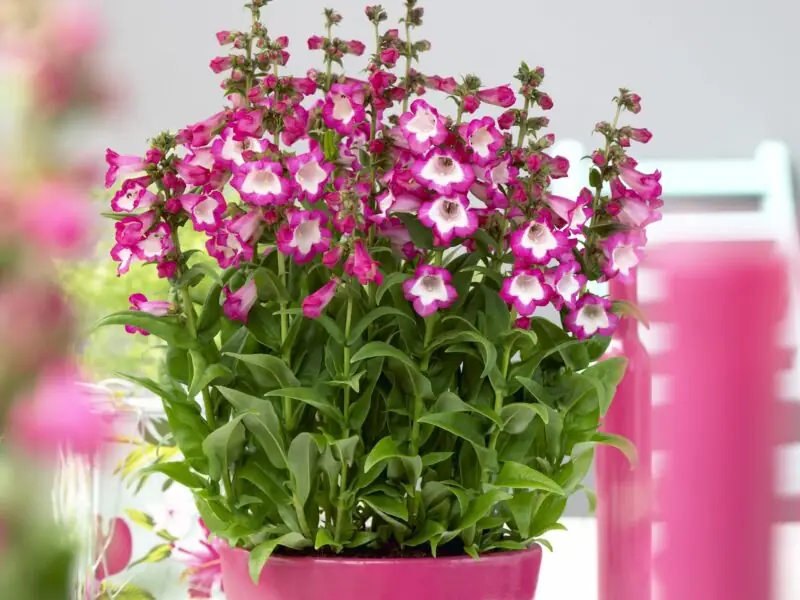
Are you searching for stunning flowers to enhance your garden? Look no further than flowers that look like bells! These bell-shaped flowers, with their unique silhouette and rainbow of colors, make a perfect addition to any garden. From early spring to late summer, there’s always a flower that looks like a bell to admire.
In this article, we’ll explore 15 types of beautiful flowers that look like bells. These are easy to grow and yield fragrant blooms. We’ll also provide crucial care tips to ensure these magnificent plants flourish year after year.
Bluebell: The Magical Bell of the Forest
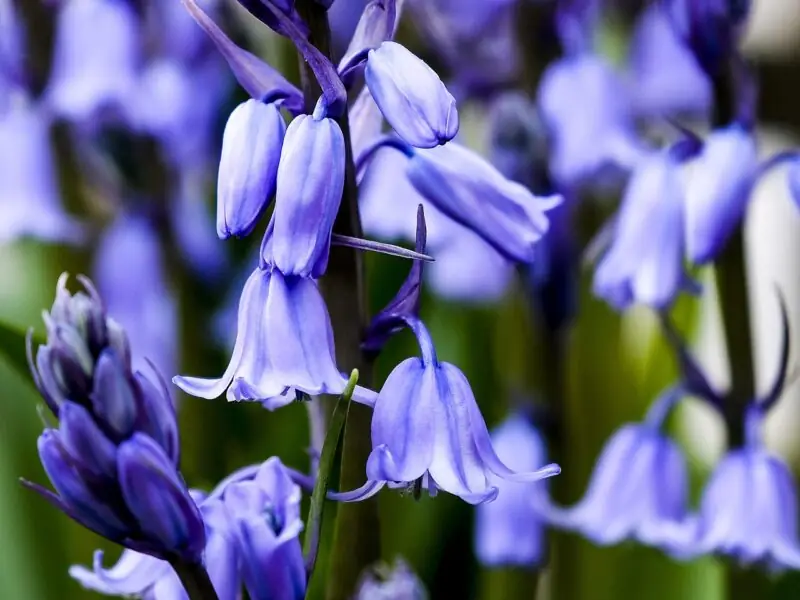
First on our list is the bluebell – a charming woodland flower with delicate drooping petals that create its signature look. These petite bell flowers appear in shades from deep purple-blue to soft pink or white.
Bluebells typically bloom in mid-spring when other plants are still budding – making them an excellent choice for early color in your garden! They favor shady spots but can also flourish in sunny conditions with sufficient moisture.
Lily Of The Valley: Petite Bells with a Sweet Fragrance
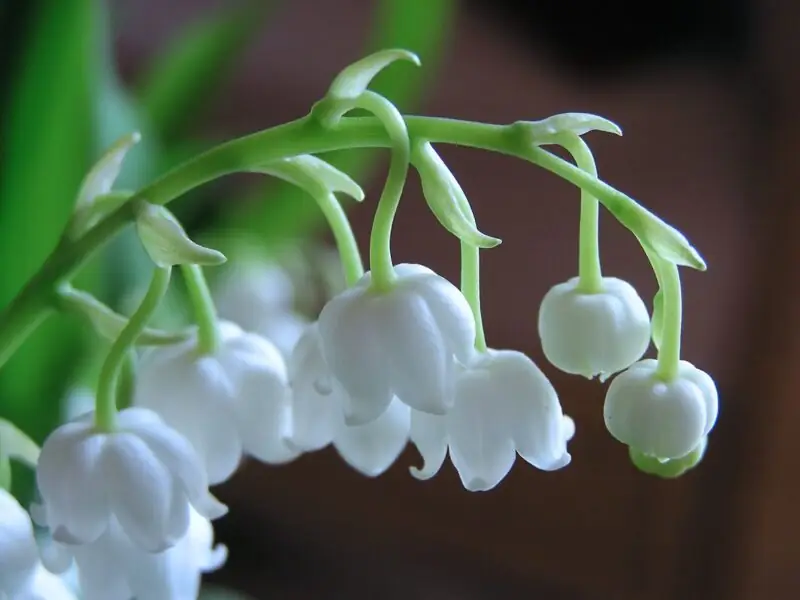
The lily of the valley is another perennial that home gardeners and florists adore. Each May, these sweet-smelling small bells dangle from arched stems. They are well-liked as cut flowers because of their tiny, fragrant white bell-shaped blossoms.
Lily of the valley thrives in cooler temperatures but can manage in warmer months. Plant them near trees where they receive partial shade and regular watering.
Their appeal goes beyond their beauty; they have medicinal properties. Their leaves and seeds are used in traditional medicine to treat several conditions.
Foxglove: A Majestic Display of Trumpet-Like Bells
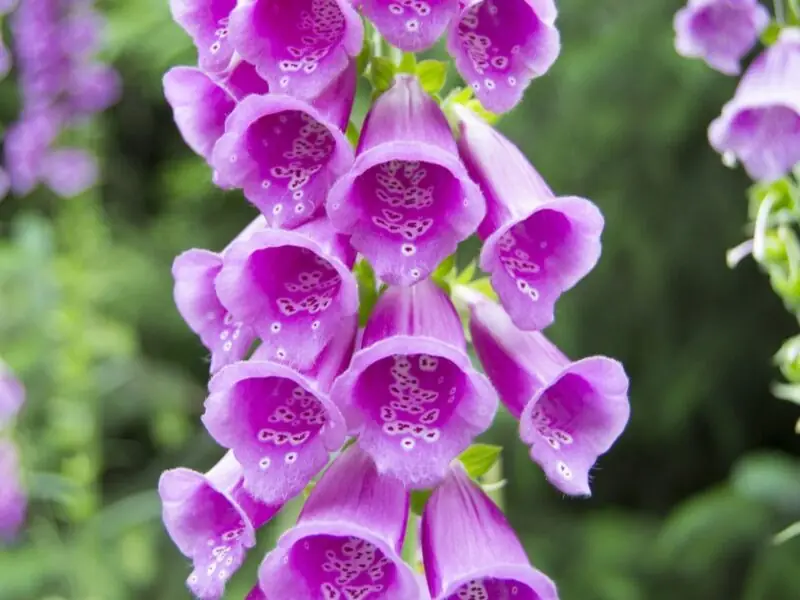
The foxglove is an imposing plant that produces spectacular trumpet-shaped flowers with speckled interiors. These plants can reach up to 6 feet tall, ideal for adding drama to your garden beds or borders.
Late spring to early summer is when foxgloves bloom, producing bell-shaped blooms in pink, white, yellow, or purple. According to legend, these gorgeous blooms draw fairies to gardens. You might get visits from tiny winged creatures if you grow these wonderful blooms!
Foxgloves prefer moist soil but can also survive in drier conditions. Adding organic compost regularly to the soil around their roots can help.
Coral Bells: The Bells with Leafy Charm
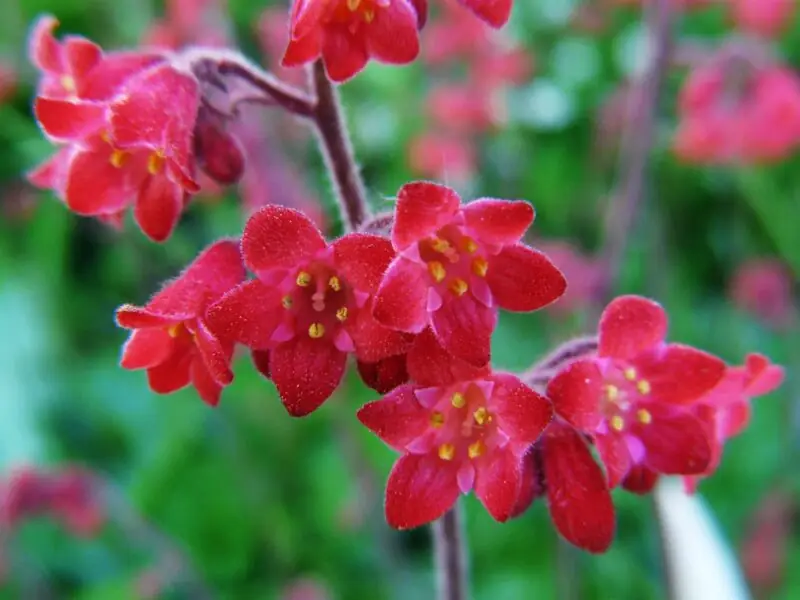
Coral bells are admired not only for their cute little bell-shaped flowers but also for their unique foliage, which grows outwards. They produce small clusters of delicate blooms atop 1-3 feet tall stems, depending on the species.
These popular flowering plants typically bloom from mid-spring to early summer, showcasing colors like deep reds, pinks, and creamy whites.
Their leaves also offer a spectrum of colors – from green to shades like caramel brown-red. This gives rise to their common name ‘coral,’ as they mimic underwater coral reefs!
Coral bells enjoy partial shade and regular watering, so keep this in mind when planting them next time!
Bellflower (Campanula): A Versatile Bell-Shaped Flower
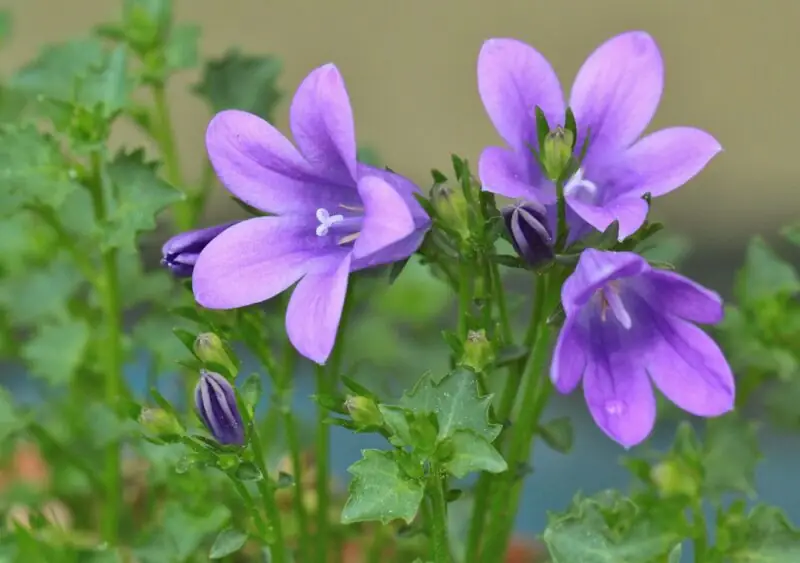
Campanulas, sometimes referred to as bellflowers, are adaptable perennials. They thrive in soils with good drainage and full sun. They produce blooms all through the summer. Bellflowers come in a variety of hues, including white, pink, and deep purple-blue bell-shaped flowers.
These dainty flowers grow tall on stalks, reaching up to 2 feet high. Delicate stems are covered by many tiny bells. They are easy to care for and require minimal maintenance once established in their garden beds.
Canterbury Bells (Campanula medium), Spotted Bellflowers (Campanula punctata), and Peach-Leaved Bellflowers (Campanula persicifolia) are a few common campanula species.
Angel’s Trumpet (Brugmansia spp.): The Dramatic Hanging Bells
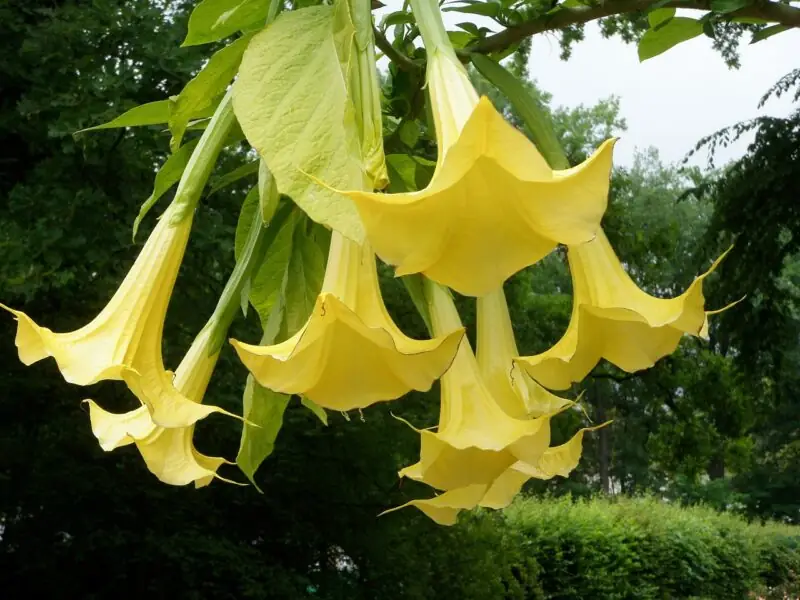
Angel’s trumpet is a stunning plant. It produces large, dramatic hanging bells. These bell-shaped flowers can grow up to 12 inches long. They bloom in shades of white, pink, or yellow and fill the air with a strong fragrance during the blooming season.
This plant thrives in warm climates and loves plenty of sunlight. It prefers well-drained soil that is consistently moist but not waterlogged.
Apart from its aesthetic appeal, angel’s trumpet has medicinal uses. Indigenous cultures have used it for centuries as a natural pain reliever and anti-inflammatory agent, thanks to its high levels of alkaloids.
Penstemon: The Hummingbird-Friendly Bells
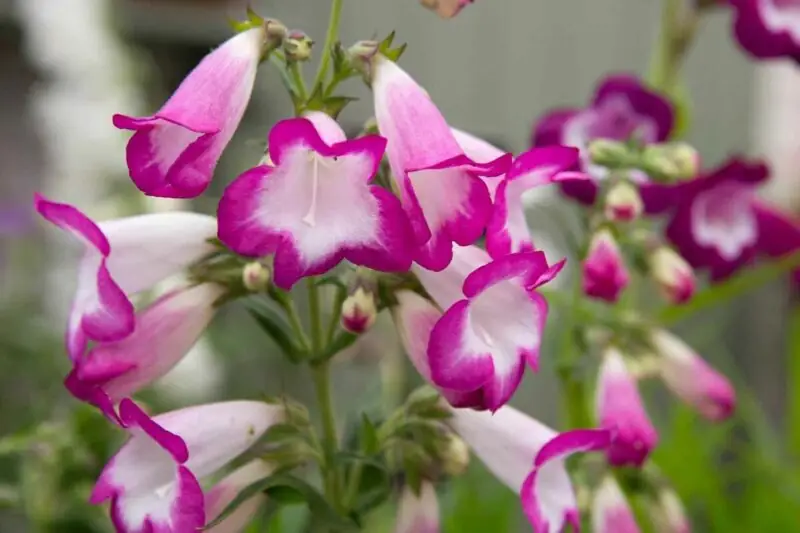
Penstemon is a popular perennial flower. It’s known for producing beautiful bell-shaped blooms in shades ranging from deep purple to bright pink or white. These flowers bloom on tall stems from late spring to early summer. They are attractive to hummingbirds due to their tubular shape.
Proper care for penstemons includes keeping the soil evenly moist. Avoid letting it become too wet or dry between watering sessions. This species grows best when planted in full sun with some afternoon shade.
Mountain Laurel (Kalmia latifolia): The Subtle Bell-Shaped Blooms
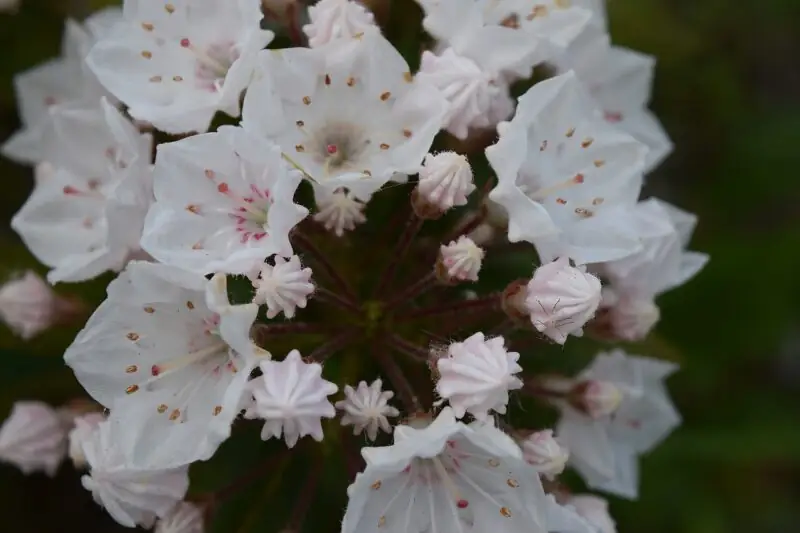
Mountain laurel features dainty clusters of bell-shaped flowers. They resemble miniature chandeliers dangling off dark green foliage. This creates an enchanting display across woodland gardens. They typically bloom from mid-spring through early summer, making them sought-after among gardeners.
The mountain laurel usually grows about six feet tall at maturity. Ensure you provide enough space when planting this shrub. It prefers partially shaded areas and acidic soil conditions enriched with organic matter like peat moss.
Grape Hyacinth (Muscari): The Blue Bell Clusters
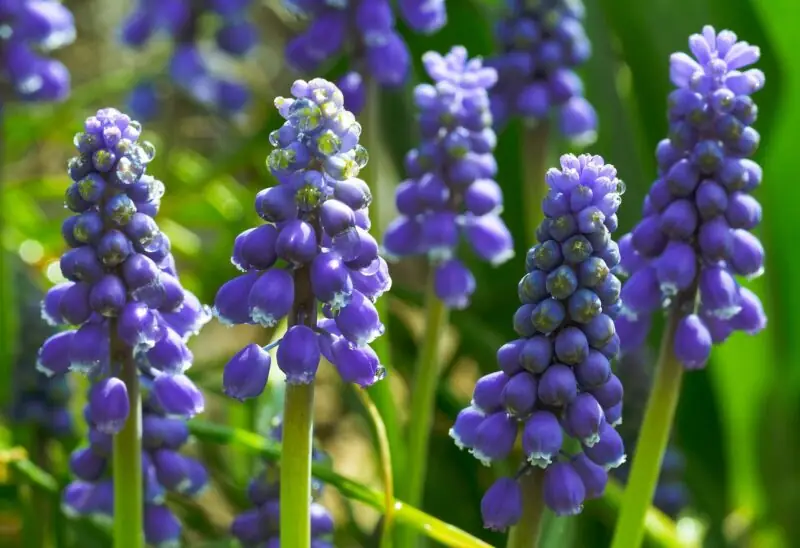
Grape hyacinths are a popular species of flowering plants. They’re known for their clusters of small, bell-shaped flowers that resemble tiny grapes. These blooms typically appear in shades from deep purple to soft blue and white.
This plant is easy to grow and thrives best in well-drained soil with plenty of sunlight. They make an excellent addition to any garden or landscape design due to their low maintenance requirements.
Daffodil (Narcissus pseudonarcissus): The Bell-Shaped Spring Herald
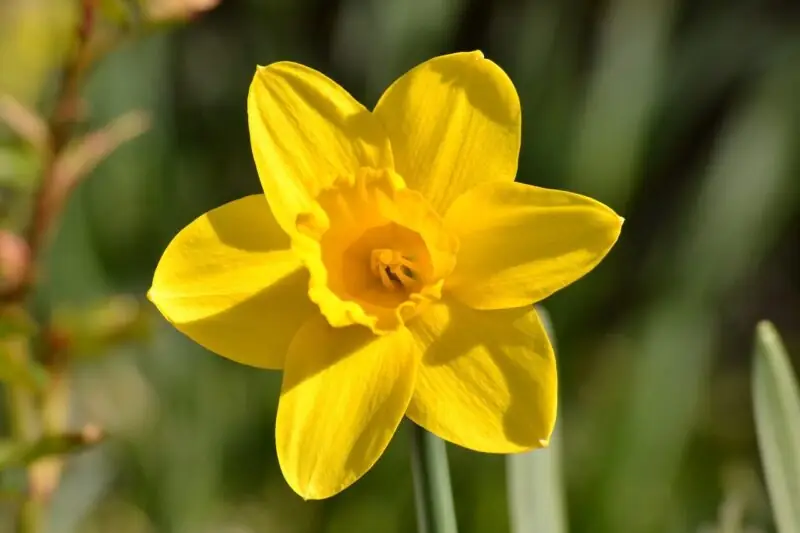
Daffodils produce charmingly delicate bright yellow trumpeting bells each spring. They are among the most beloved flower varieties around the world. These blooms herald new growth after long winter months, giving rise to hope for vitality.
For proper care, these bulbs require planting at least six weeks before the first frost. This allows enough time for root development. Once established, they thrive best under full sun to partial shade conditions. Regular watering is required, but avoid getting them too wet or dry.
Essential Care Tips for Bell-Shaped Flowers
Bell-shaped flowers display a variety of shapes, sizes, and colors. Each type has unique care instructions that should be followed closely. Here are some essential tips to keep your flowers looking like bells:
- Always maintain the soil moist but avoid over-saturation.
- Most bell-shaped flowers thrive when planted directly into the ground. Loose dirt allows roots to spread more easily.
- Opt for organic fertilizers rather than chemical options. The latter may harm surrounding wildlife habitats.
- Implement effective drainage practices. For instance, placing rocks beneath pots can prevent issues with overwatering.
Frequently Asked Questions About Bell-Shaped Flowers
Yes, the majority of bell-shaped flowers are perennials. These flowers typically bloom year after year once established.
Several bell-shaped flowers resist deer, including lily of the valley, foxglove, bells of Ireland, and coral bells.
Absolutely. Bell-shaped flowers can grow in pots, provided there’s ample room for root growth. Canterbury bell flowers and white mountain heather thrive in containers.
Many bell-shaped flowers draw pollinators like bees and butterflies. These include bluebells, foxgloves, and trumpet vine.
The ideal time to plant most bell-shaped flowers is during the spring and early summer. However, the timing depends on when they bloom. For instance, you should plant lily-of-the-valley in late fall. On the other hand, guinea hen flowers prefer autumn planting.
Conclusion
Finally, you may add many lovely bell-shaped flowers, sometimes known as “flowers that look like bells,” to your yard or hanging baskets. These simple-to-grow perennials have fragrant flowers that come in a variety of colors, from deep blue to pink and purple. Some even have white petals that, thus the name, are reminiscent of ringing church bells.
You can enjoy these distinctive bell-shaped blossoms all through spring and the beginning of summer by choosing several kinds. On tall stems, they produce stunning clusters. These flowers frequently droop like bells, nicely balancing other garden plants with their own forms and hues. These lovely bell-shaped flowers are a wonderful option if you’re looking for flowers to bring home today!